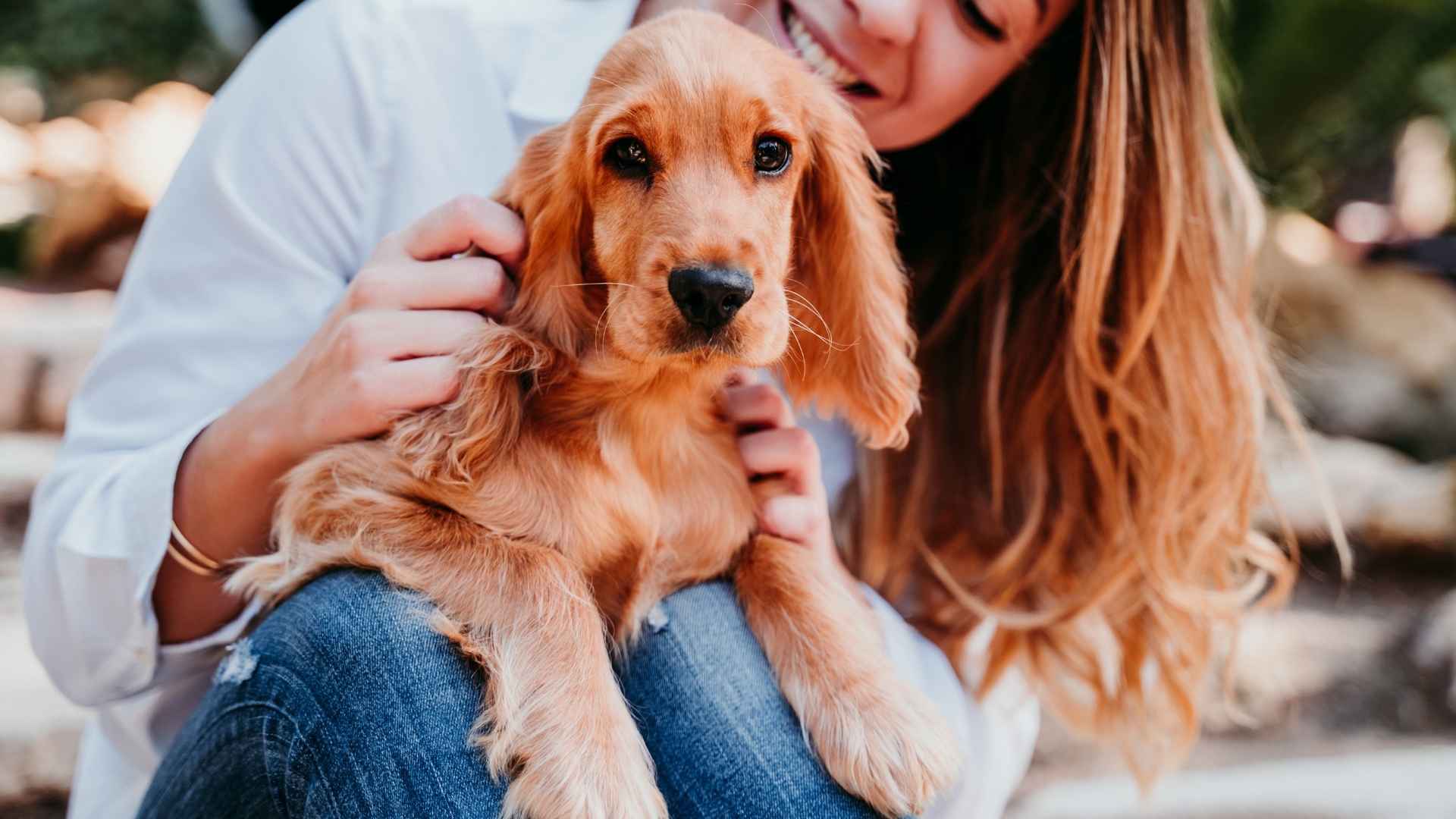Some dogs enjoy their independence, but others? They love hard, stay close, and never let go. Loyalty is a defining trait in the dog world, but a select few breeds elevate it to an art form. These devoted companions aren’t just pets—they’re protectors, confidants, and lifelong shadows who would follow you to the ends of the earth, wagging tail and all.
Certain breeds were specifically developed to work closely alongside humans—herding livestock, guarding homes, retrieving game, or simply warming laps—and their emotional attachment to their people has been passed down through generations.
Whether they hail from the Working, Herding, Sporting, or even Toy Groups, these dogs often form unbreakable bonds with their families. Some are gentle guardians of children, while others become fierce protectors of the entire household.
If your dream dog is the kind that senses your mood, cuddles through tough days, and stands by you through thick and thin, these incredibly loyal breeds might just steal your heart for life.
Dog Breeds That Love Hard and Stay Loyal for Life
1. Labrador Retriever
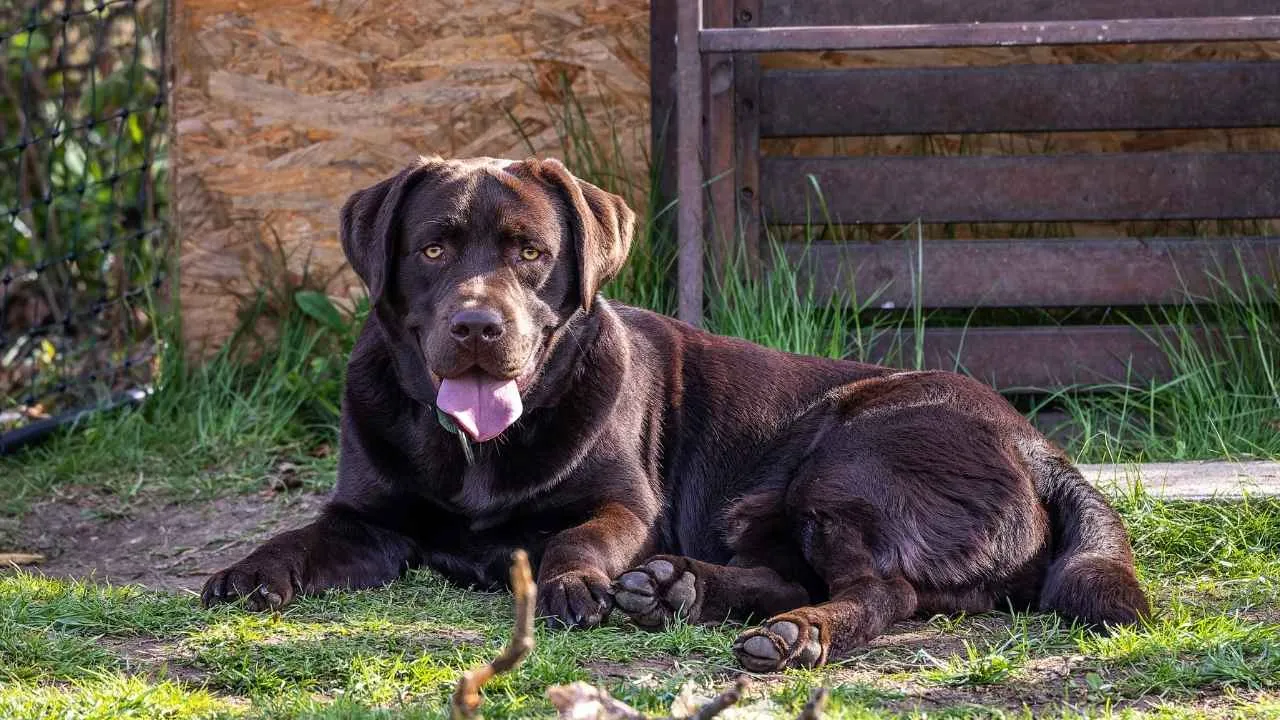
Also known simply as the “Lab,” the Labrador Retriever hails from Newfoundland, where it originally worked alongside fishermen to retrieve nets and haul in fish. Brought to England in the early 1800s, it was developed into a skilled gun dog.
Belonging to the Sporting Group, Labradors are medium-to-large dogs, with males standing 22.5–24.5 inches tall and weighing 65–80 pounds, while females are slightly smaller at 21.5–23.5 inches and 55–70 pounds. PetMD describes them as having a broad skull and nose, a deep chest, a sturdy tail, and a well-developed, muscular physique.
They have a short, dense double coat in black, chocolate, or yellow, and a distinct “otter tail” that aids in swimming. With a lifespan of 10 to 12 years, they are known for their affectionate temperament, intelligence, and boundless energy.
Training
Labradors are highly trainable, making them ideal for families and first-time dog owners. Their eagerness to please and quick learning ability make basic obedience and even advanced commands easy to teach.
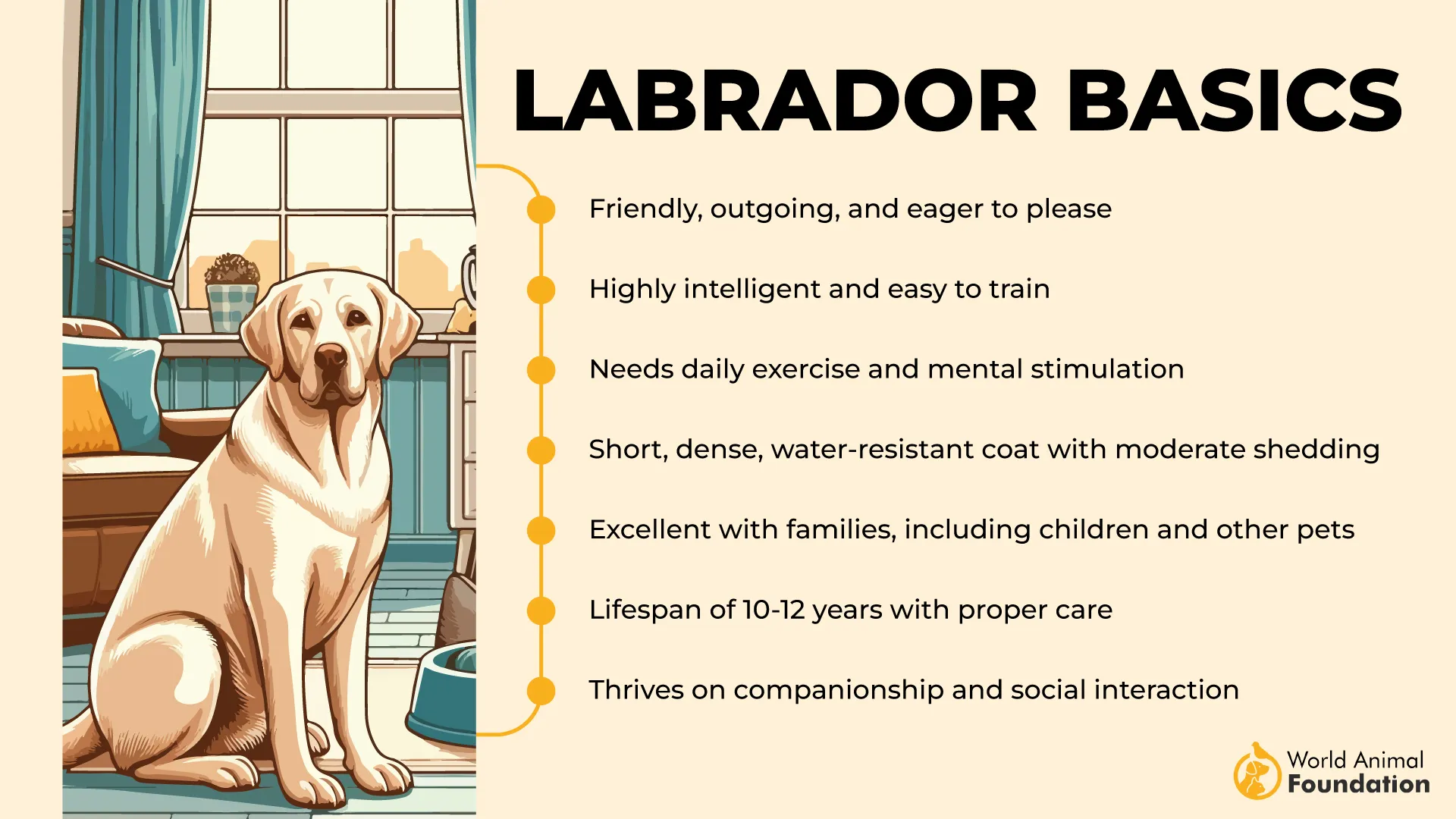
However, they do require consistent training from puppyhood to harness their energy and channel it productively. Early socialization helps them grow into well-rounded companions who thrive in active households with plenty of structure and positive reinforcement.
Fun Fact: In 2001, a yellow Lab named Endal was hailed as the “Dog of the Millennium” after performing a heroic act that included retrieving a phone and getting help for his disabled owner.
2. Golden Retriever
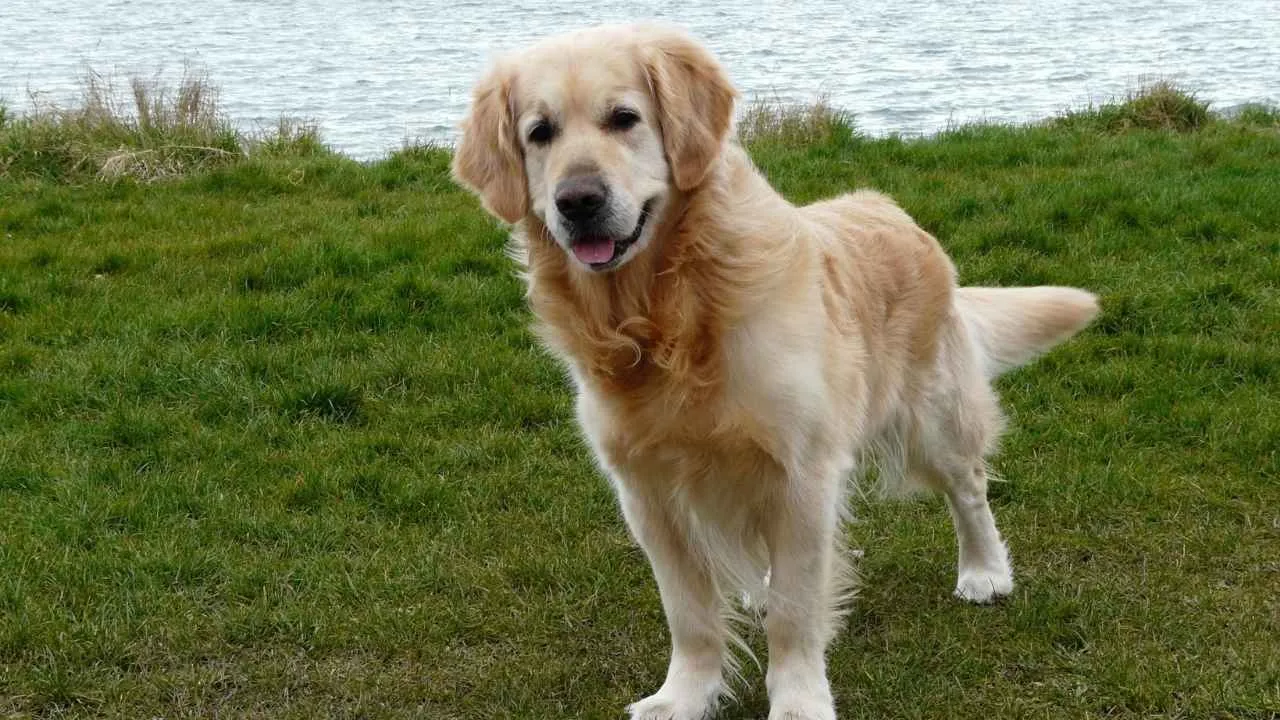
Also known simply as the Golden, the Golden Retriever hails from 19th-century Scotland, where it was developed as a gundog skilled in retrieving waterfowl. Recognized for their medium-length golden coats and warm, expressive eyes, these dogs belong to the Sporting Group and are celebrated for their intelligence, affectionate nature, and eagerness to please.
With a lifespan of 10 to 12 years, these therapy dogs are consistently among the most popular dog breeds in the U.S.—a status they’ve earned through their family-friendly demeanor and adaptable personalities. WebMD states that males typically grow to a height of 23 to 24 inches at the shoulders and usually weigh between 67 and 75 pounds.
Training
Golden Retrievers are often mistaken for naturally well-behaved, but they require early and consistent training to truly thrive. Known for their intelligence and willingness to learn, they excel in obedience and are often trained as guide dogs, therapy companions, and even search-and-rescue heroes.
Professional breeders emphasize starting training from puppyhood to ensure the dog grows into a calm, well-mannered companion.
Fun Fact: Every Golden Retriever today can trace its lineage back to a single litter born in 1868 at Guisachan House in the Scottish Highlands.
3. Cavalier King Charles Spaniel
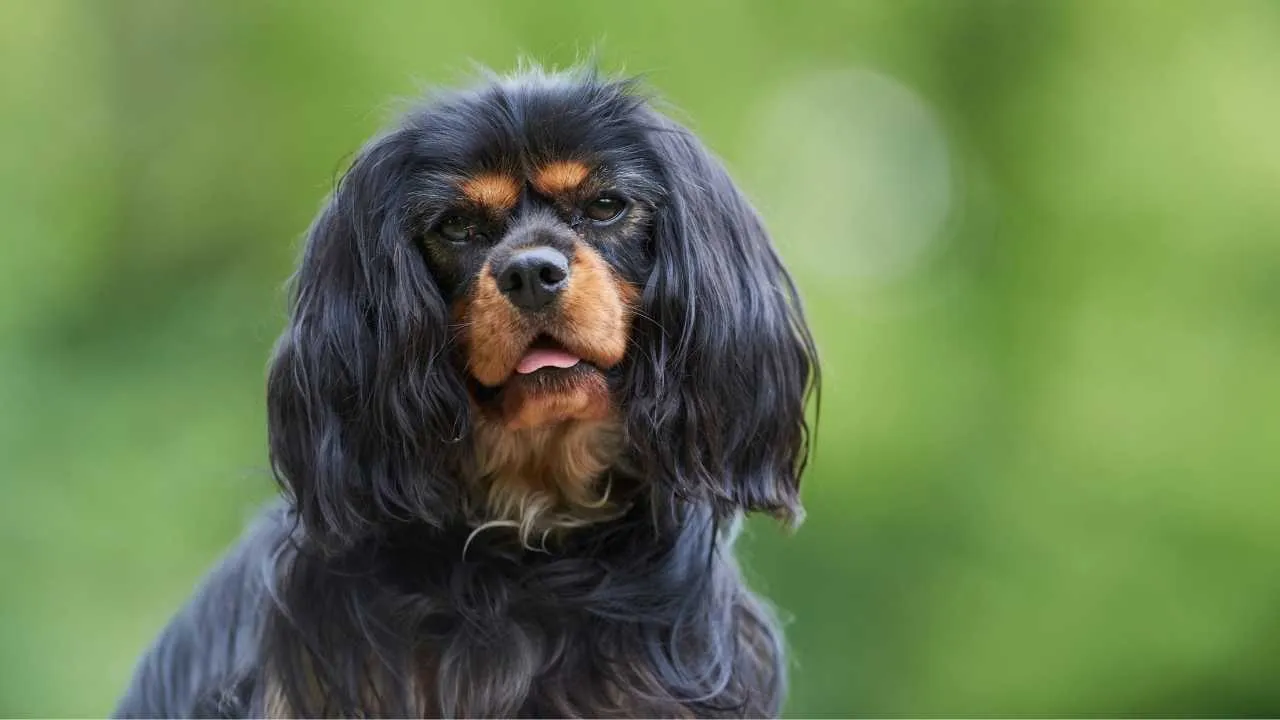
With their soft, expressive eyes and flowing silky coat, the Cavalier King Charles Spaniel—often affectionately called Cavaliers or Cavies—embodies both elegance and devotion with a gentle nature. This charming toy breed hails from England, with roots tracing back to the 1600s when small spaniels were crossed with Asian toy breeds.
Officially recognized in 1945, the Cavalier King Charles Spaniel was developed to resemble earlier depictions of King Charles II’s beloved dogs. Standing about 12–13 inches tall and weighing between 13–18 pounds, these gentle companions typically live 12 to 15 years. The AKC notes that they are generally friendly and get along well with both children and other dogs.
Their signature features include a graceful build, feathery ears, and a friendly, affectionate personality that makes them a favorite among dog lovers of all ages.
Training
Cavaliers are naturally eager to please, making them one of the easiest toy breeds to train. Their sociable, people-oriented nature pairs beautifully with consistent, gentle instruction and plenty of praise. Start training early with clear boundaries, and they’ll quickly pick up good habits.
Their intelligence and sensitivity mean harsh methods should be avoided—positive reinforcement yields the best results. Early socialization helps them become even more well-rounded and adaptable.
Fun Fact: U.S. President Ronald Reagan gifted a Cavalier named Rex to his wife, Nancy; Rex famously turned on the White House Christmas lights.
4. Boxer
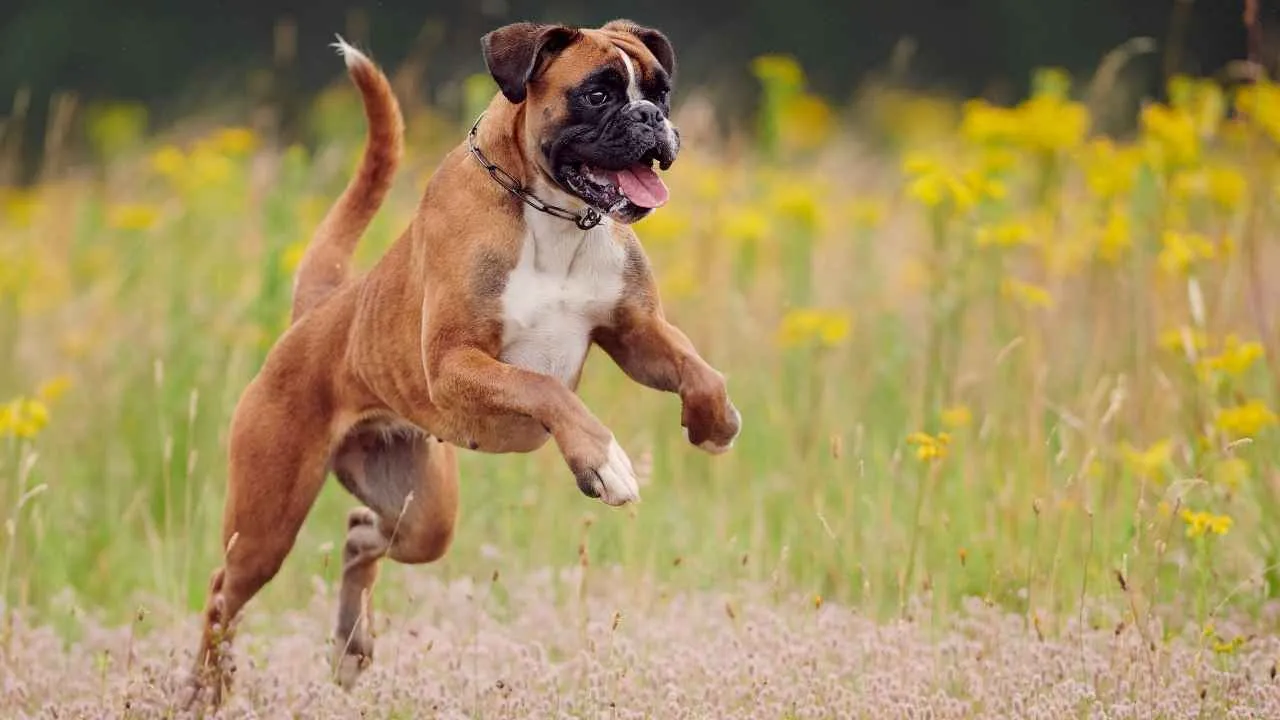
The Boxer, also known as the Deutscher Boxer, is a medium-to-large working dog originally developed in Germany. Descended from the Bullenbeisser and refined by crossing with English Bulldogs, the Boxer was bred to hunt and hold large game such as boars and bears.
Recognized by the American Kennel Club in 1904, this muscular, squarely built breed stands 21–25 inches tall and weighs between 65–80 pounds.
With a short coat, prominent black mask, and a proud stance, Boxers are the embodiment of strength, elegance, and loyalty. They’re well-known for their “boxing” style play, using their powerful front paws in a playful, striking motion.
Training
Boxers are incredibly intelligent, but their high energy and playful stubbornness require consistent and early training. Positive reinforcement works best, especially when paired with firm leadership.
Their eagerness to please and desire to bond closely with their families make them responsive to training when done correctly. Early socialization is crucial to help temper their protective instincts and ensure they interact well with strangers and other pets.
Did you know? Film icons Humphrey Bogart and Lauren Bacall were passionate Boxer lovers and even had their wedding Boxer pup, Harvey, featured in publicity shots.
5. Cocker Spaniel
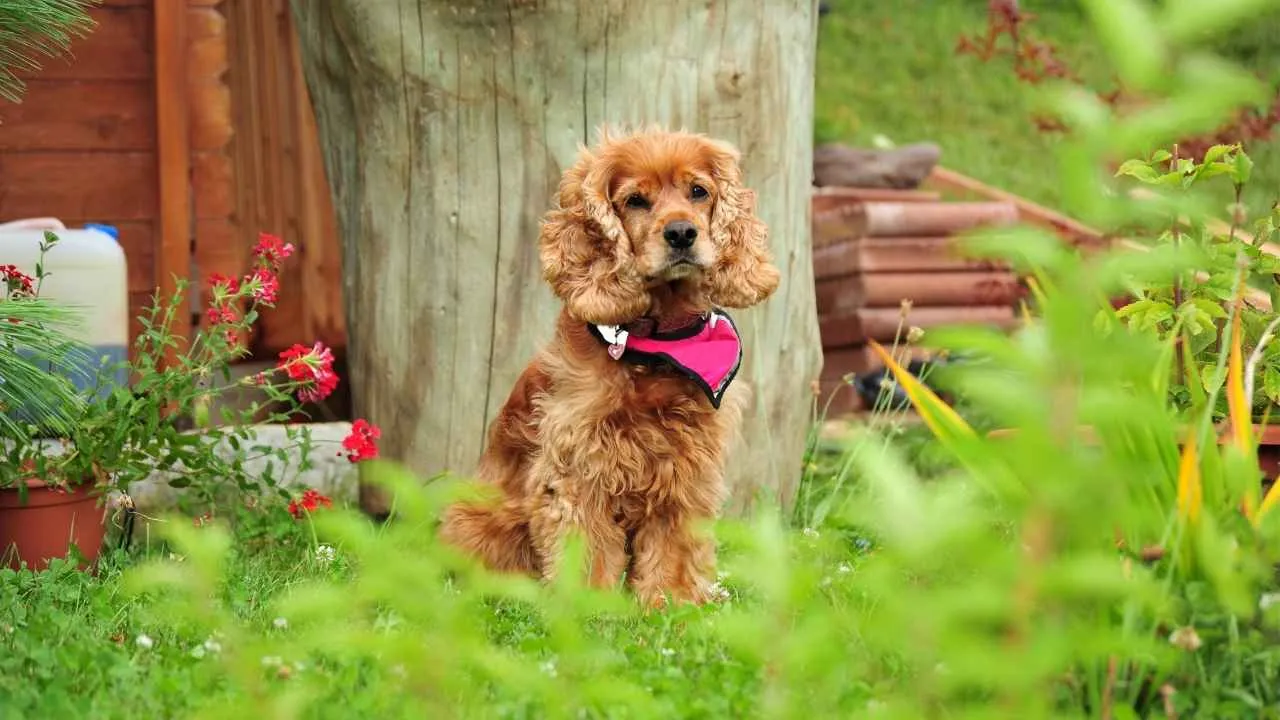
Cocker Spaniels, also known as American or English Cockers, are cherished for their affectionate nature and soulful expressions. Originally bred as sporting dogs to flush and retrieve game birds like woodcocks, these medium-sized companions have deep roots in history, dating back to the 14th century.
Officially recognized by the American Kennel Club in 1878, the breed was later split into two—American and English—in 1946. Cocker Spaniels typically stand between 13.5 to 15.5 inches tall and weigh around 20 to 30 pounds.
Their long, silky ears and expressive eyes give them a distinct, almost Disney-like charm. As members of the Sporting Group, they are known for their boundless energy, affectionate disposition, and adaptability in family settings. With a lifespan of 10 to 14 years, they make loving lifelong companions.
Training
Cocker Spaniels thrive on structure, consistency, and positive reinforcement. They are eager to please and intelligent, making them quick learners when training is started early. However, without proper guidance, their excitable energy can lead to jumping, stealing items, or overreacting during walks and guest visits.
It’s crucial to channel their enthusiasm through regular training, play, and mental stimulation. Even the most hyper cockers can be taught calmness with the right approach, leading to a more enjoyable and balanced relationship.
Fun Fact: Show Cockers often have longer eyelashes than most breeds, adding to their signature sweet-eyed look!.
6. Great Dane
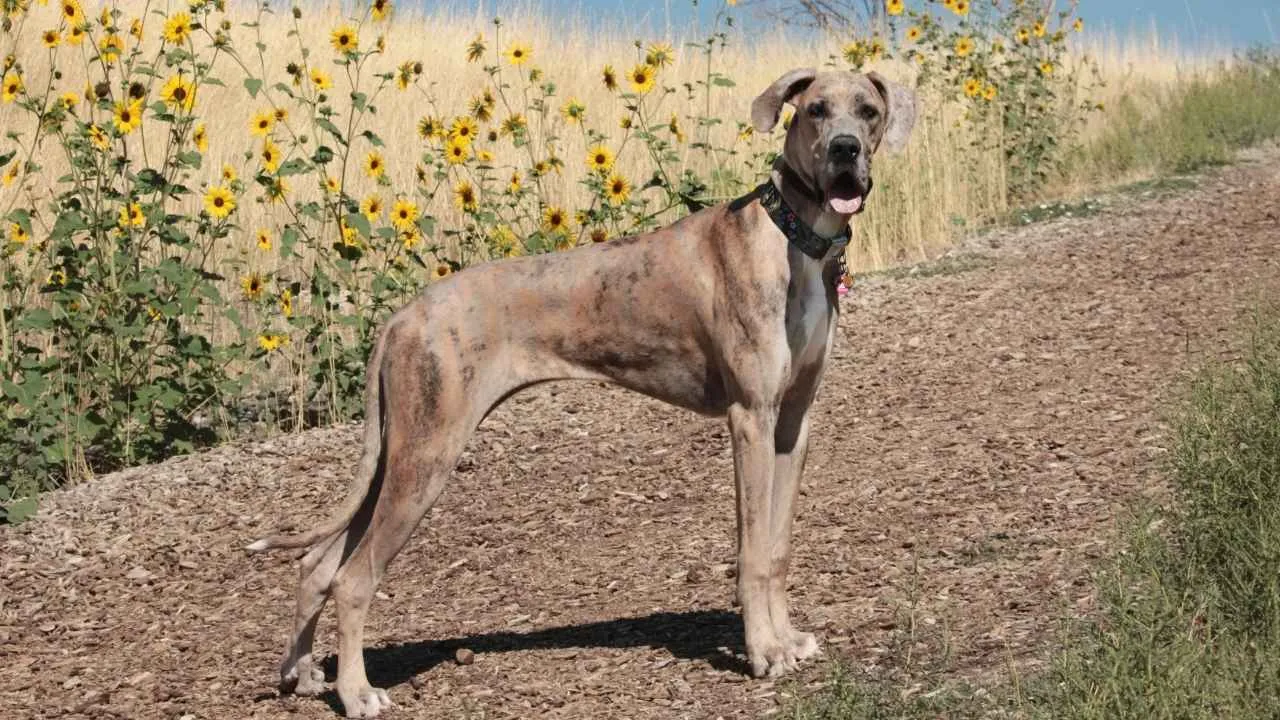
Known as the “Apollo of Dogs,” the Great Dane—also called the German Mastiff or Grand Danois—is a towering yet gentle giant that hails from Germany. Originally bred for boar hunting over 400 years ago, this elegant working breed is distinguished by its powerful, square-jawed frame, deep chest, and sleek coat.
Coat colors include black, blue-gray, fawn, brindle, harlequin, and mantle, with the fawn and brindle typically featuring a black mask. These affectionate giants stand between 28–32 inches tall and weigh 110–175 pounds, living on average 7–10 years. Don’t be deceived by their size—their calm demeanor and unwavering loyalty make them the epitome of a loving family companion.
Training
Training should start early with a Great Dane, as their large size means unwanted behaviors can become unmanageable if left unchecked. These intelligent dogs respond well to positive reinforcement and consistent routines.
Introducing them to various people, pets, and environments from puppyhood helps build confidence. Professional guidance from a certified behaviorist is highly recommended to shape their manners and prevent future dominance issues.
Fun Fact: The Great Dane is Pennsylvania’s official state dog and has been featured in iconic media like Scooby-Doo and Marmaduke!
7. Shetland Sheepdog
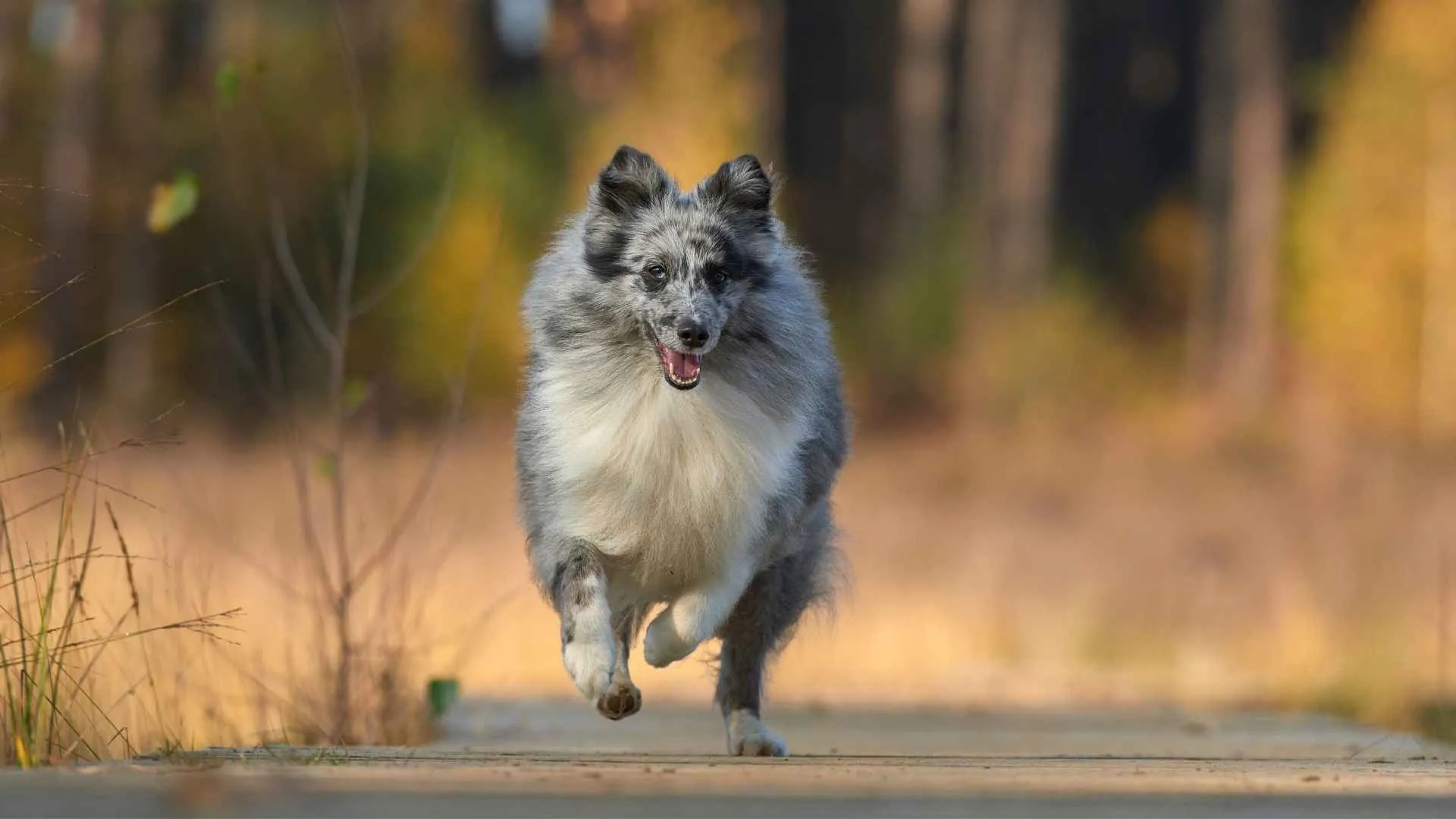
The Shetland Sheepdog, fondly known as the Sheltie, hails from the Shetland Islands of Scotland, where it once herded miniature livestock across rocky terrain. Despite its compact size, typically standing 13–16 inches tall and weighing between 14–16 pounds, this dog carries itself with elegance and poise.
Often compared to a miniature Collie, the Sheltie sports a luxurious double coat that comes in black, sable, or blue merle, often marked with white or tan. Its almond-shaped eyes and long bushy tail contribute to its expressive and devoted appearance.
Shelties belong to the Herding Group and have an average lifespan of 12 to 14 years. Fiercely loyal and affectionate with their families, they thrive on close companionship and are known for forming strong emotional bonds.
Training
Training a Sheltie is typically a joy thanks to their quick intelligence and eagerness to please. These sensitive dogs respond well to positive reinforcement and consistent routines.
Obedience work helps shape them into well-mannered companions. Their perceptiveness means they easily pick up on human moods and commands, making them both intuitive learners and emotional support partners.
Fun Fact: The Sheltie’s appearance and temperament have earned it the nickname “apartment-sized Collie.”
8. Irish Setter
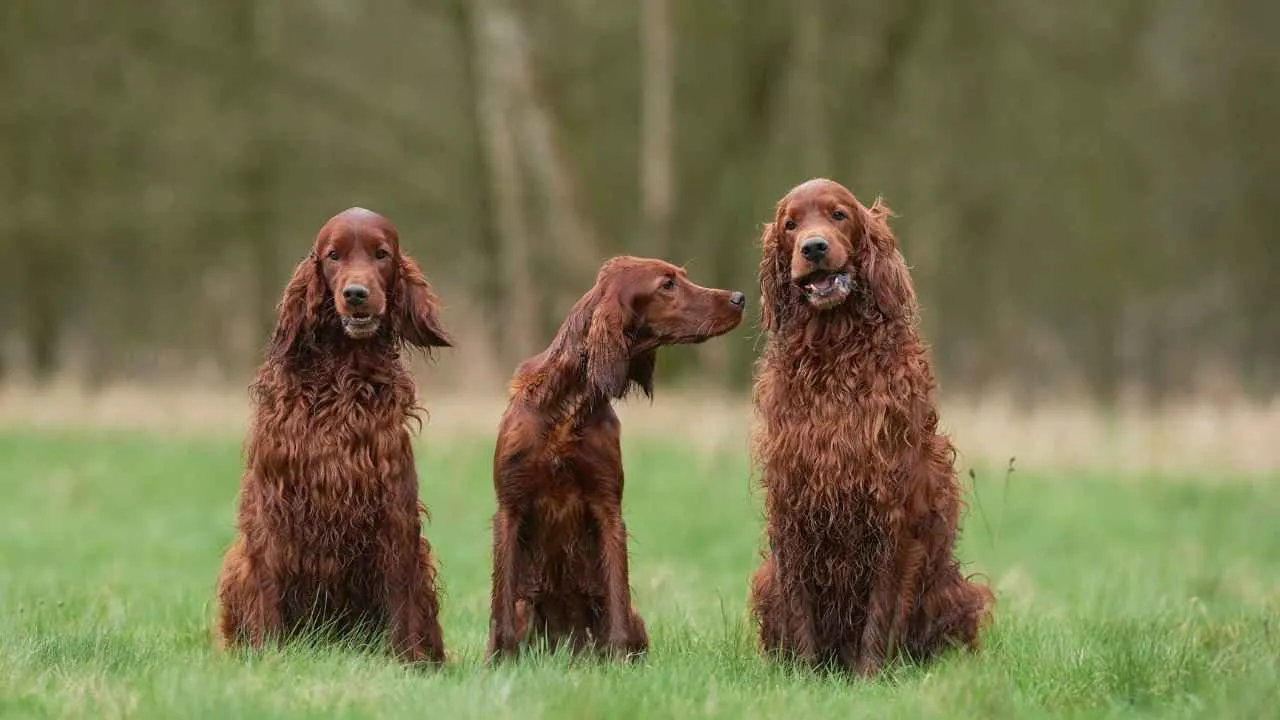
With its radiant red coat and joyful demeanor, the Irish Setter—also known as the Red Setter—is an elegant sporting dog that blends grace with a lively spirit.
Developed in 18th-century Ireland, this breed stems from a mix of English Setters, spaniels, and pointers, originally bred to locate birds during hunts. It stands tall at 25 to 27 inches and weighs between 60 to 70 pounds.
The Irish Setter is widely celebrated for its affectionate, gentle temperament and striking mahogany-colored coat with feathering along the ears, chest, and tail. These dogs crave companionship and thrive in family settings, especially with children. Their loyalty runs deep, so much so that they may develop separation anxiety if left alone too often.
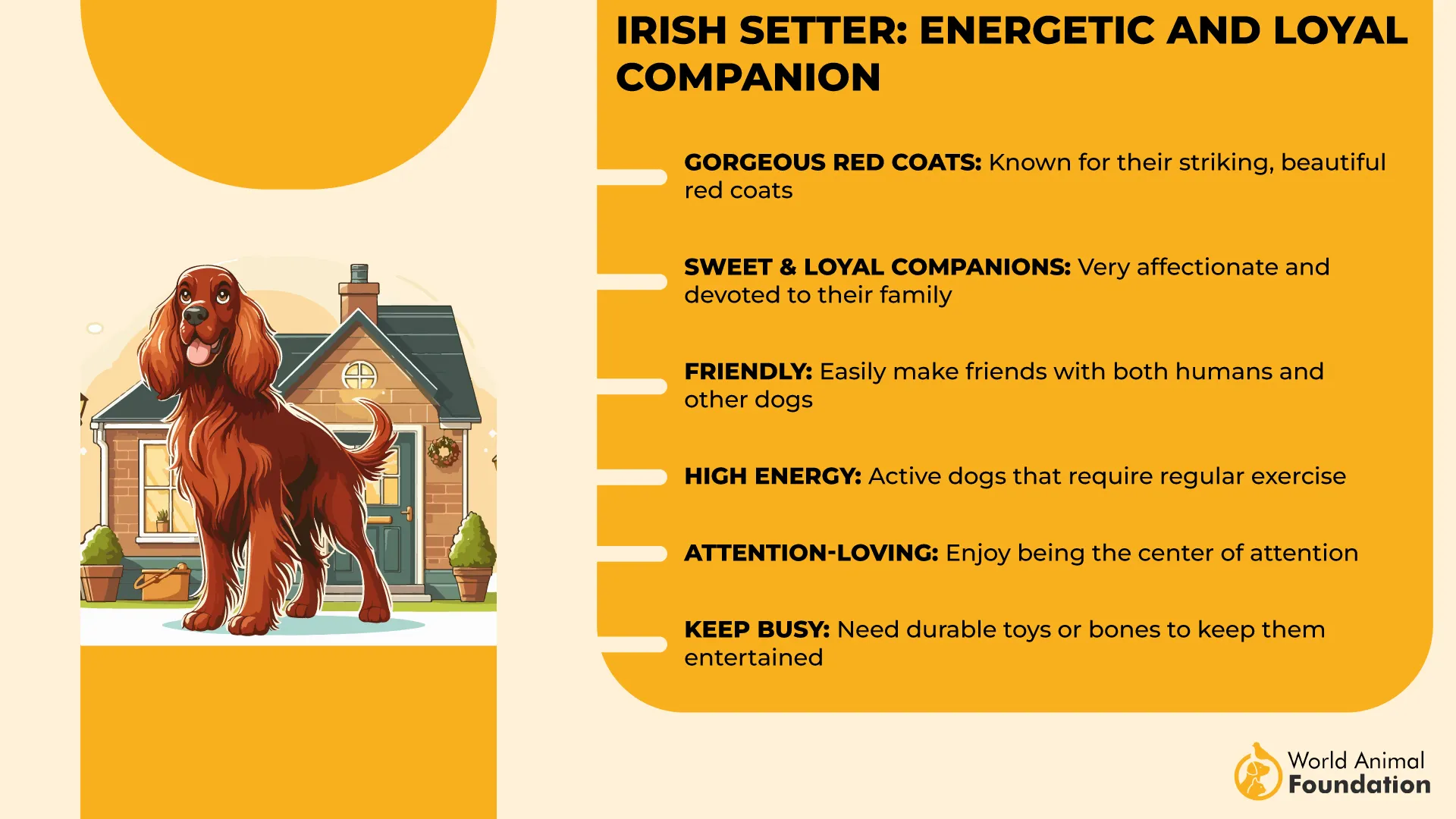
Training
These hunting dogs are intelligent and eager to please, making them relatively easy to train with consistency and patience. However, their playful and energetic nature means they respond best to positive reinforcement and active training sessions that keep them mentally stimulated. Early socialization is crucial to channel their enthusiasm constructively.
Fun Fact: Irish Setters are known for their fast, flowing gallop and were once used in the field to silently “set” game birds for hunters.
9. French Bulldog
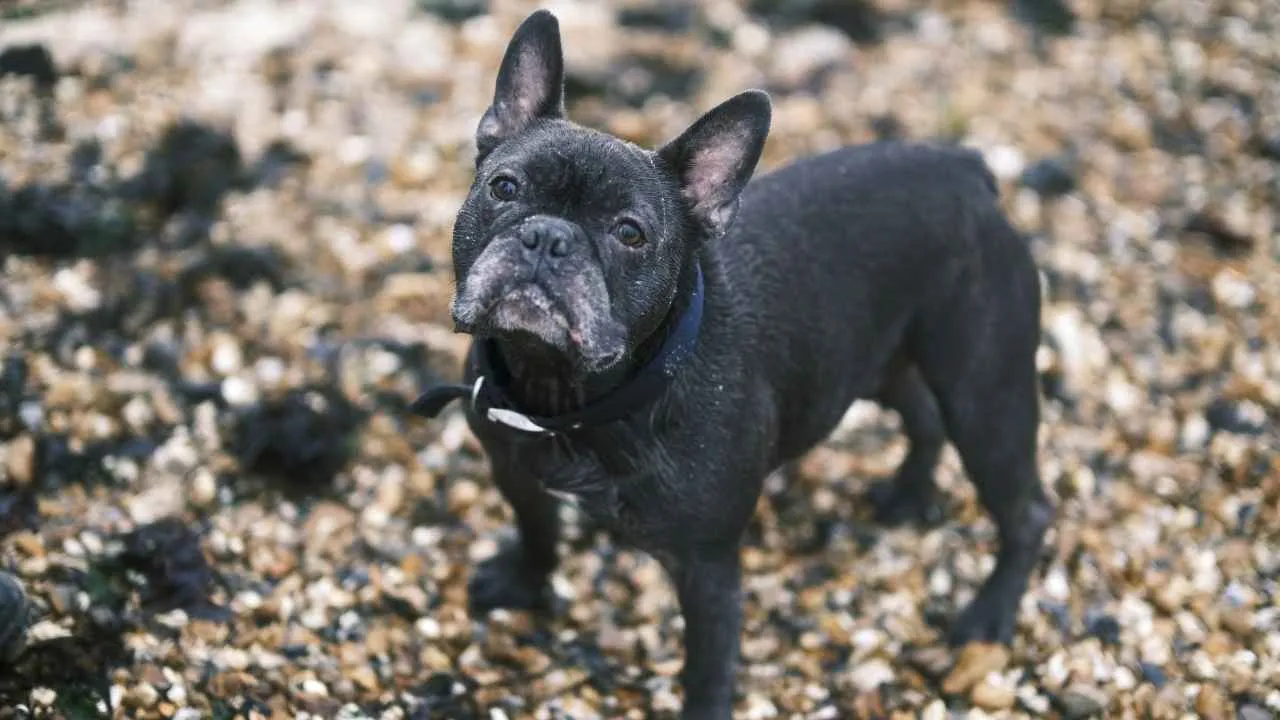
With its signature bat-like ears and compact, muscular frame, the French Bulldog—affectionately known as the Frenchie—has soared in popularity across urban households for good reason. Originating in 19th-century France as a companion breed derived from Toy Bulldogs and native ratters, the Frenchie is now beloved worldwide for its even-tempered, affectionate nature.
Standing around 11 to 13 inches tall and weighing between 19 to 28 pounds, this breed boasts a short, smooth coat in shades of brindle, fawn, white, or stylish combinations. French Bulldogs typically live 10 to 12 years and belong to the Non-Sporting Group. They are one of the most loyal dog breeds.
Quiet yet alert, they make loyal family companions and easily adapt to apartment life. Their expressive faces and deep emotional bonds make them ideal for singles or families looking for a dog that loves deeply and sticks close to their side.
Training
Though not overly vocal, French Bulldogs are intelligent and respond well to positive reinforcement. Training sessions should be short and engaging, which suits their attention span and helps strengthen your bond. Frenchies are eager to please and generally cooperative, especially when sessions are infused with praise and treats.
Fun Fact: A French Bulldog named Gamin de Pycombe was aboard the Titanic. His owner survived, but sadly, the beloved Frenchie did not.
Conclusion
Dogs have an extraordinary way of weaving themselves into our lives, becoming more than pets—they become loyal companions who bond deeply with their humans. Breeds like the German Shepherd, Doberman Pinscher, and Australian Shepherd are shining examples of dogs who stay by your side through every stage of life. Their devotion is unmatched, offering comfort, security, and a kind of unwavering love that only a dog can give.
These breeds prove that when dogs love, they love fully and forever. While their protective instincts make them ideal for homes with older children, their affection ensures they thrive as true members of the family. From watchful guardians to affectionate friends, these dogs remind us that the best relationships are built on trust, devotion, and heart.


